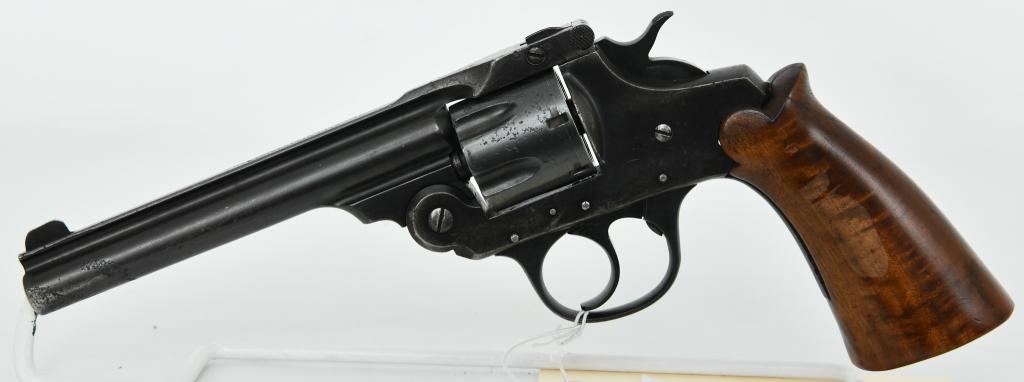

When the trigger is pulled the cylinder rotates until it hits the stop, and is ‘pinned’ between the hand and the lock.

The cylinder can free-rotate when the gun is at rest, but there is a flat-spring in the cylinder-pin that resists this. It’s best to tilt the gun upside down when doing this to insure none of the empties slip under the ejector and jam the gun up. Cartridges are ejected automatically, then the ejector snaps back into place for reloading when the gun is fully-opened. You just pivot the lever up and the gun opens. Model 1: These are characterized buy the single side-latch. 32 S&W cartridge is not very powerful, but it’s a step up in both reliability and power from a. 32 S&W, and the Model 1s both include a ‘Safety Trigger,’ an innovation later used on Glock pistols many decades later. From top to bottom: Model 1 (1894,) Model 1 First Model 2nd change (1896) and a Model 3 (1909)Īll three of these guns hold five rounds of. For an additional cost they could be had with a blue finish and/or barrels ranging from 2-6″ in length. 38 in this round-up.Īll the guns in this test originally came standard with a 3-1/4″ barrel and a nickel finish. Of course these were the exact same parts used to make the old guns that they at least implied were not safe for then-modern ammunition, but hey, marketing. These were advertised as ‘ safe for all modern ammunition,’ meaning smokeless. They registered the US Revolver Company to sell these old-style guns to mail-order companies like Sears Roebuck to sell through their catalogues. What they did was to simplify the guns slightly, mainly omitting the Transfer Bar Safety, to make them less expensive. The new models were successful, but IJ still had literally tons of barrels, cylinders and frames for the old models. So they marketed the new guns as ‘safe for smokeless powder’ and the idea that smokeless wasn’t safe for old guns became cemented in gun-lore. The difference wasn’t the type of powder, it was that you use much less smokeless to achieve the same effect. They loaded the new-fangled powder just like the old and blew up their guns. There was just enough validity to this idea of ‘smokeless guns’ to make it plausible, but it didn’t come from people firing smokeless in ‘black powder’ guns it came from people hand-loading cartridges at home, specifically people that weren’t clear on the difference between the types of powder. Ammunition manufacturers weren’t idiots when they transitioned to smokeless powder all guns were ‘made for Black Powder.’ Not being any more fond of being sued than the next fellow, they formulated smokeless loads that were safe in existing guns, and people did it all the time.

OK, never mind that people had been shooting smokeless loads in these guns for years. The new guns were safe for smokeless powder. They needed something to convince people to buy these new guns, something obvious… At some point the lightbulb lit and they had it. In 1909 they introduced upgraded versions of their top-breaks that used a stronger locking mechanism and were generally a little ‘beefier.’ This made them more expensive of course, and the upgrades were subtle enough that the gun-buying public might miss them or not understand their importance. But IJ’s revolvers were better quality than most of their direct competitors. Not the best, mind you for American top-break revolvers S&W was the king. In the first three years after opening their doors they made hundreds of thousands of modestly priced, decent quality revolvers. The Iver Johnson Arms and Cycle Company was nothing if not prolific. This allowed the guns to be carried fully loaded with no concern that dropping the gun might cause it to fire. Iver Johnson was the company that introduced the Transfer-Bar Safety, meaning that the hammer cannot contact the firing pin unless the trigger is fully to the rear. One of the things I have a very modest collection of are Iver Johnson top-break revolvers, all dating from the late 19th Century to about WW1. That was the final straw and there’s no further point in denying it. But last week when Chris at McAllen Defense offered me a sweet deal on a couple I took it… because they were variations of models I already had. See, I have been maintaining that my accumulation of top-break revolvers was a sort of ‘reference library’ of late 19th- early 20 Century concealed carry guns. OK, the time for denial has passed, and it’s all Iver Johnson’s fault.


 0 kommentar(er)
0 kommentar(er)
